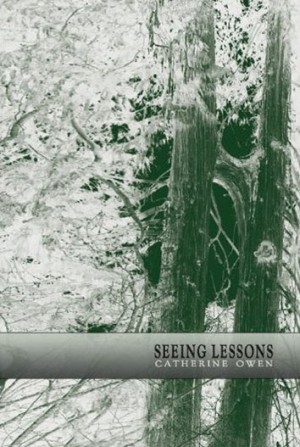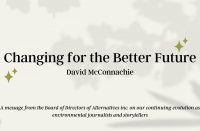Good photographs and good poetry have a great deal in common: They both offer lessons in seeing, placing their audience as if behind the lens or the pen, opening them to the world in a way not before realized. Catherine Owen’s book of poetry, Seeing Lessons, demonstrates the power of both optical and linguistic imagery to capture the past and show us the present with new eyes.
Good photographs and good poetry have a great deal in common: They both offer lessons in seeing, placing their audience as if behind the lens or the pen, opening them to the world in a way not before realized. Catherine Owen’s book of poetry, Seeing Lessons, demonstrates the power of both optical and linguistic imagery to capture the past and show us the present with new eyes. This volume, divided into four sections, is a touching tribute to Ida Madeline Warner (Mattie) Gunterman, a US-born frontierswoman and photographer who walked with her husband and son to a new life in BC at the end of the 19th century. Her life on BC’s northwest coast and in its interior spanned the questionable promise (and inevitable demise) of gold and silver mining in that region from the beginning of the 20th century until the end of the Second World War.
The first section begins with a collection of poems that have little explicit connection with Gunterman, though it introduces themes of time, memory and naturalistic imagery that re-emerge later on. In many ways, this is the strongest and most poetically compelling part of the book, with its combination of intense description and politically charged references. For example, in “26 Eagles,” Owen writes:
Multiply and fill the Earth
that dark Old Testament stamp,
bequeaths Chernobyl, Exxon Valdez,
the desert of the Ural Sea and, numberless
as the stars in their spheres, frozen butterflies,
sterile salmon, sequestrums of trees.
Bequeaths killers of eagles, he
with his knife gnawing and the golden corpses
The second section combines imaginatively reconstructed journal entries created as if from Gunterman’s perspective with the frontierswoman’s photographs collected from archival sources. Owen, a BC poet, artist and musician whose books have spanned environmental themes, the work of expressionist painter Egon Schiele, and both poetic and photographic collaborations, pens a swift and glancing narrative of Gunterman’s life, each entry giving a snapshot of a particular moment. Taken together with the historical photographs, it forms a tapestry of a life rushing past, from the birth of her son to the death of her husband, and on to her own growing frailty. The last two sections return to a free and loose poetic style, but this time with more direct references to Gunterman, her family and photographs.
The text demanded second and third readings, and again I found the first section more fascinating than the rest. In turning my gaze from the environmental horrors of the last century in “26 Eagles” to “Moose: Deka Lake, BC” on the facing page, I saw a transition from the global scale of ecological catastrophe to personal revulsion at eating moose flesh as though it were no more than a resource: “…everything reduced to the gut / though here I was, complicit / swallowing / the transformation while shrinking / at a vision of blood.” This theme of personal ambivalence in response to environmental concerns returns pages later when Owen laments the loss of trees that her book requires: “hard / selves slipping into paper, soft / pith steeling into tables. / The day begins / and I […] write on them, of slaughter.” However, amid the sadness of death and loss (the kind, perhaps, that is always implied in a photograph, a vision from the past), there is a kind of redemption, for in the passage of time, we might one day wake up “As if / this morning / we had never begun / to plunder.”
After reading the book, I was left trying to decipher the “seeing lessons” Owen had intended her readers to take away. As told in this collection, the story of Mattie Gunterman seems, on the whole, to be about personal attempts to hang on to memories through the dynamic and relentless passage of time (“clutching a camera to stave off grief”). I viewed the photos with a kind of distant melancholy, knowing that the people and landscapes depicted have long since passed away. Not even Gunterman’s commitment to the more advanced photographic technology available was able to ensure the images survived the ravages of time: Most of her photos were destroyed when the family home burned down in 1927. The few hundred that remain belonged to her son: These form both the third part of the book and a cornerstone of the Vancouver Public Library’s historical photographic collection.
Owen was unable to find that other solid remembrance of Gunterman’s life: her grave. Ultimately she decides that this gives no reason for distress. “Neglect can be a kind of care,” she writes. Although many passages are touching, when considered from a distance, there is little nostalgia in these poems – just the sense of brute factuality that one finds in a photograph. The final section, a single poem entitled “Geologos,” demonstrates the inadequacy, or perhaps inconsequence, of photographic memory in the face of geologic time: “[…] inaccessible still, seeing / beyond carbonates, tonnage. Scree. All / these shots, and time over the Lardeau, falling.”
Seeing Lessons, Catherine Owen, Hamilton, Ontario: Wolsak and Wynn, 2010, 96 pages
Subscribe now to get more book reviews in your mailbox!












